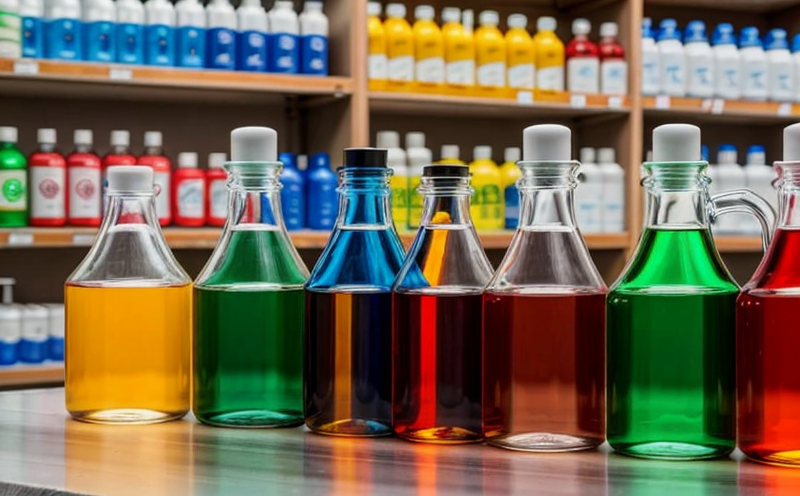ISO 14184-2 Determination of formaldehyde in textiles Vapour absorption method
The ISO 14184-2 standard provides a comprehensive approach to the determination of formaldehyde in textiles using the vapour absorption method. This procedure is particularly relevant for ensuring compliance with various regulatory standards aimed at reducing exposure risks associated with formaldehyde emissions from textile products. Formaldehyde, commonly used as a preservative or stabilizer during manufacturing processes, can pose health hazards if released into the environment or through contact with consumers.
The ISO 14184-2 method involves several critical steps designed to accurately measure the amount of formaldehyde released by textiles over time. Specimens are exposed under controlled conditions that simulate real-world usage scenarios, such as washing and wearing. The vaporized formaldehyde is then absorbed onto a specific absorbent material, which is subsequently analyzed using standard analytical techniques.
The testing process begins with careful selection and preparation of the textile specimens. Factors like fabric type, thickness, and color are taken into account to ensure accurate results that reflect actual use conditions. Once prepared, these samples are placed in an incubation chamber where they undergo controlled temperature and humidity cycles to simulate typical environmental stressors.
During this phase, formaldehyde present within the specimen is allowed to volatilize into vapor form. This vapor subsequently comes into contact with a solution containing absorbent agents designed specifically for capturing even trace amounts of formaldehyde. After sufficient time has passed, the absorbed material is extracted and analyzed using gas chromatography (GC) or other appropriate analytical methods.
The results obtained from this analysis provide quantifiable data regarding the level of formaldehyde released by each tested sample. Compliance with relevant international standards such as ISO 14184-2 helps textile manufacturers ensure their products meet safety requirements set forth by regulatory bodies worldwide.
Implementing rigorous testing procedures like those outlined in ISO 14184-2 not only enhances product quality but also contributes significantly towards protecting end-users from potential health risks associated with exposure to excessive levels of formaldehyde. By adhering strictly to these guidelines, organizations can build trust among consumers while maintaining their competitive edge in the market.
Moreover, consistent application of this standard aids in standardizing practices across industries, facilitating easier collaboration between suppliers and purchasers alike. Understanding how different fabrics behave under various processing conditions allows for better decision-making regarding raw material selection and production methods.
In conclusion, ISO 14184-2 serves as an essential tool for ensuring the safety of textile products by providing reliable means to detect formaldehyde emissions during use. Its implementation promotes healthier environments both within manufacturing facilities and for consumers who interact with these materials daily.
Industry Applications
The ISO 14184-2 standard finds extensive application across multiple sectors, including apparel manufacturing, home textiles, automotive interiors, and personal care products. It plays a crucial role in ensuring that all textile items comply with stringent formaldehyde emission limits prescribed by various national and international standards.
For instance, the fashion industry relies heavily on ISO 14184-2 to guarantee that garments meet strict formaldehyde release specifications before being sold to consumers. This ensures customer safety while maintaining brand reputation. Similarly, manufacturers of bedding sets and curtains leverage this standard to produce safe sleeping environments free from harmful substances.
In the automotive sector, interior fabrics must adhere strictly to ISO 14184-2 guidelines to prevent harmful outgassing that could affect driver comfort or even pose health risks over prolonged exposure. Additionally, personal care products containing fabric elements need thorough testing using this standard to avoid potential skin irritations caused by high formaldehyde concentrations.
Adhering to ISO 14184-2 provides textile producers with a competitive advantage by demonstrating commitment to quality and safety standards recognized globally. This fosters trust among consumers who value environmentally friendly practices and promotes long-term partnerships between suppliers and retailers alike.
Customer Impact and Satisfaction
By implementing ISO 14184-2, companies demonstrate their dedication to maintaining high standards of product safety and environmental responsibility. This commitment translates directly into enhanced customer satisfaction as consumers gain confidence knowing they are purchasing safe textiles free from harmful chemicals.
Customers appreciate the peace of mind that comes with buying products tested according to recognized international protocols like ISO 14184-2. They can rest assured that their purchases comply with stringent formaldehyde emission limits set by regulatory authorities worldwide. This fosters loyalty towards brands known for upholding ethical manufacturing practices.
Moreover, compliance with this standard helps businesses avoid costly recalls and legal actions resulting from non-compliance incidents. It also opens doors to international markets where strict regulations govern textile imports. In essence, adherence to ISO 14184-2 ensures that every stakeholder involved in the supply chain benefits from a safer end-product.
Overall, incorporating rigorous testing procedures into daily operations enhances overall customer satisfaction by promoting transparency and trust between manufacturers and consumers alike. This approach ultimately contributes towards building stronger relationships within the industry ecosystem.
Use Cases and Application Examples
| Application Area | Description |
|---|---|
| Apparel Manufacturing | Testing garments for compliance with formaldehyde emission limits before retail sale. |
| Home Textiles | Evaluating bedding sets and curtains to ensure safe sleeping environments. |
| Automotive Industry | Ensuring interior fabrics do not contribute to harmful outgassing in vehicles. |
| Personal Care Products | Verifying fabric components used in products like towels or face cloths are free from excessive formaldehyde. |
| Textile Recycling | Determining the amount of residual formaldehyde left after recycling processes. |
| Consumer Goods Retailers | Verifying incoming inventory meets strict formaldehyde emission standards. |
The ISO 14184-2 standard offers a versatile framework applicable across various industries. Whether it's ensuring product safety or maintaining regulatory compliance, this method provides reliable results essential for maintaining high-quality standards throughout the supply chain.





